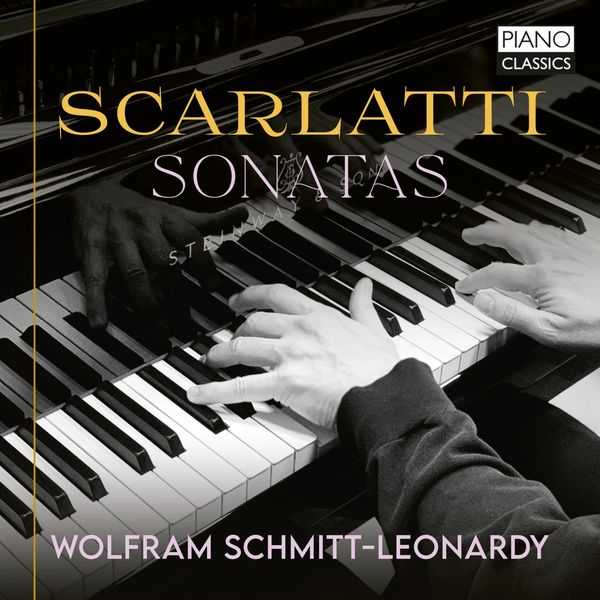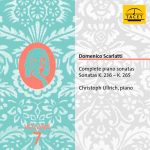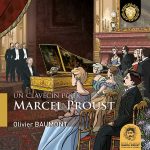

Composer: Domenico Scarlatti
Performer: Wolfram Schmitt-Leonardy
Format: FLAC (tracks)
Label: Piano Classics
Catalogue: PCL10250
Release: 2022
Size: 1.21 GB
Recovery: +3%
Scan: yes
01. Sonata in D Minor, K.01: I. Allegro
02. Sonata in D Minor, K.32: I. Aria
03. Sonata in D Major, K.33
04. Sonata in B Minor, K.87
05. Sonata in D Major, K.29: I. Presto
06. Sonata in B Minor, K.27: I. Allegro
07. Sonata in G Major, K.427: I. Presto quanto sia possible
08. Sonata in C Major, K.132: I. Cantabile
09. Sonata in E Minor, K.98: I. Allegrissimo
10. Sonata in E Major, K.136: I. Allegro
11. Sonata in E Major, K.162: I. Andante-allegro
12. Sonata in A Major, K.208: I. Adagio e cantabile
13. Sonata in A Major, K.39: I. Presto
14. Sonata in A Major, K.322: I. Allegro
15. Sonata in G Major, K.455: I. Allegro
16. Sonata in C Major, K.95
17. Sonata in F Minor, K.466: I. Andante moderato
“An eagle whose wings are grown”, according to his father Alessandro, the young Scarlatti left his native Naples for Venice, “escorted only by his own ability”. Born in Italy in 1685, Domenico Scarlatti spent the majority of his career in the service of the Portuguese and Spanish royal families – with the latter appointment enabling him to devote his full attention towards composing for the harpsichord. This unusual cultural background accounts for why the Italian’s music, though contemporary with that of Bach and Handel, differs so much in comparison; Spanish dance rhythms (such as the flamenco), and folk tunes with Moorish and gypsy-like flavours, indicate that day-by-day-street life was a great source of inspiration to Scarlatti.
By his early 20s he had already held audiences in thrall with an ability at the harpsichord which was deemed almost supernatural. There is assuredly the most prodigal imagination at work, as well as an extraordinarily sophisticated keyboard technique, in the 555 surviving keyboard sonatas which fuse Italianate cantabile and counterpoint with vivid Hispanic imagery: folksong, castanets, military trumpets and strumming guitars.
All these qualities can be enjoyed in Wolfram Schmitt-Leonardy’s selection of 17 sonatas. Several of them are taken from the collection of Kk. 1-30 (in the catalogue produced by Ralph Kirkpatrick) which comes down to us as the earliest source of the sonatas in print, published shortly before he moved to Lisbon, thence to Madrid and around the royal courts of Spain, in the service of the princess who would become the Queen of Spain. Her patronage afforded Scarlatti the time and resources to evolve a highly personal style, full of eccentricity and flights of fancy.
Written in single-movement form, Scarlatti’s sonatas reveal the development of new playing techniques, including note repetitions and fast passages in parallel 3rds and 6ths, as well as the innovation of musical structures, which point to the emerging Classical style. Hardly less than Bach, these sonatas have become for many pianists a proving ground for their own technique and imagination, rewarding an improvisatory response to their flamboyant effects. However, Schmitt-Leonardy also features several of the composer’s most poetic and reflective sonatas such as the Aria, Kk. 29 and the melancholy soliloquy of Kk. 208.
Wolfram Schmitt-Leonardy was born in Saarlouis, Germany, in 1967, and his first important teacher was a student of Walter Gieseking and Edwin Fischer. His quintessentially pianistic approach to Scarlatti exploits all the colouristic possibilities of a modern grand, while articulating the quick sonatas with sparkling deftness of touch.



